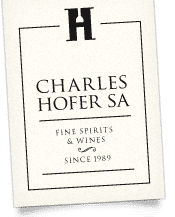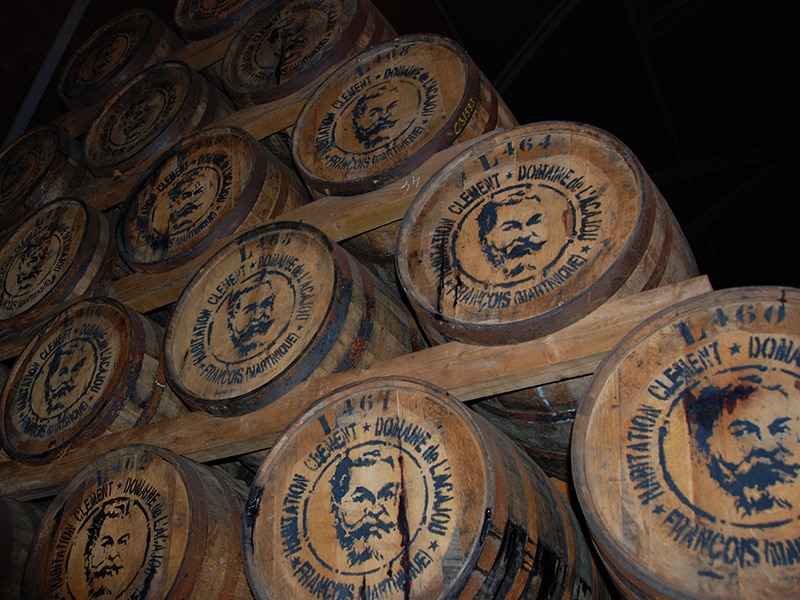By Patric Lutz, Partner & Managing Director, Charles Hofer SA
It inspired world travelers to take on epic adventures and connoisseurs around the world are enthralled with its intense and independent flavor. We are, of course, talking about rum, the legendary drink of seafarers. It has long reached the status of a lifestyle drink and, undoubtedly, rum is today one of the most important spirits in any bar. While the German-speaking part of Switzerland is slowly warming up to rum, western Switzerland evidences a broader supply and appreciation for this product.
A Brief History
Rum has been around since ancient times; fermented beverages made from sugarcane first appeared in India and China. Thus, the inhabitants of Malaysia at the time regularly enjoyed their “brum”. The possibilities presented by fermentation were already known, but there was no knowledge of distillation. So, in today’s terms, the former “brum” should really be considered a type of sugarcane wine or beer.
From light “brum” to strong Rum
The distillation of rum, as we know it today, began in the 17th century. Slaves on the Caribbean sugar plantations were the first to recognize that molasses, a by-product of sugar production, could be fermented into alcohol. With the addition of the distillation process, which came later, the first real rum was created from the fermented molasses juice. All indications are that this happened on Barbados.
Rum conquers the world
Rum delivers the goods! Its unique flavor and relaxing effect were no secret to the former European colonists on the American continent. Within only a short period of time, rum production became the most profitable and largest enterprise in all of New England. This explains how it was possible that in the 17th century, every man, woman, and child reached an average consumption of rum totaling 13.5 liters per year. Increased use of sugar and greater demand for the product in Europe required new measures in the the sugar trade. At the time, this problem was solved through a three-pronged trade pact between Africa, the Caribbean, and the American Colonies. This trade arrangement, steeped in history, took place among the three varied regions on different sides of the Atlantic. Slaves, in particular, were “transferred” as cheap labor. The political intervention of the government with the Sugar Act of 1764, played its part, ultimately, in initiating the American Civil War.
A classic becomes an icon
Following this strict intervention, rum did not become fashionable again until the end of the 18th century. Its unending success story, which is still being written today, began with the order of a barrel of Barbados Rum to celebrate the inauguration of George Washington.
Three distinctions that specify origin
- Ron – produced in the Spanish Antilles
- Rhum – has its origins in the French Antilles (today predominantly Martinique, Guadeloupe and La Réunion)
- Rum – produced in English speaking parts of the world
Rum-knowledge for connoisseurs
Pure sugarcane juice is the base ingredient for the Rhum of the French Antilles. Otherwise, all types of rum are produced from molasses, a brown by-product of sugarcane processing with a viscous consistency. Approximately 90% of sugarcane contains sugar-rich juice. During rhum production, this juice is fermented into a sugarcane wine. For all other types of rum, molasses are first diluted with water. This step begins the fermentation process. As with other spirits, there is a distinction between pot and patent distillation processes. The first results in “heavy” and flavourful rums that originate in the former British Colonies. Jamaica, in particular, is famous for these kinds of rums. The second distillation method, the patent or column method, results in “light” rums with less intense flavours. These are today the most common and most popular rums. If a rum is not sold as white rum, it is aged in oak barrels for a period of several years, which serves as flavour enhancement. In light of the warm climate which speeds up the maturation process, it generally takes less than 10 years to produce a distillate full of interesting flavours.
Fine French Products!
 As a big fan of classic French spirits, my heart skips a beat at the mention of Clément. My favorite is Canne Bleue, straight up or on the rocks. This is a vintage white rum produced from only one particular kind of sugarcane. Then come the white (Premiére Canne) and brown (VSOP) rhums that are ideal for a ti punch. The ti punch is a part of life in the home country of rum – it is made of ice, cane sugar, lime, and rum. In my opinion, the crowning achievements are the after-dinner rhums, such as the 6 ans (six years), the 10 ans (10 years), the XO, or the Cuvée Homère.
As a big fan of classic French spirits, my heart skips a beat at the mention of Clément. My favorite is Canne Bleue, straight up or on the rocks. This is a vintage white rum produced from only one particular kind of sugarcane. Then come the white (Premiére Canne) and brown (VSOP) rhums that are ideal for a ti punch. The ti punch is a part of life in the home country of rum – it is made of ice, cane sugar, lime, and rum. In my opinion, the crowning achievements are the after-dinner rhums, such as the 6 ans (six years), the 10 ans (10 years), the XO, or the Cuvée Homère.
Clément distills its rhum specialties in the Distillery Simon, which focuses on creating each individual rhum in oak barrels. A large storage capacity allows Clément to consistently reach its high standards of quality.
Rum enjoyment around the world
By including products by Berry Brothers, I have reached my goal of covering almost the entire world of rum, without getting tangled up anywhere. Under rums, you will find:
- Spanish rums: from Panama, Grenada, St. Lucia
- British rums: from Guyana, Barbados, Jamaica, Fiji
- French rums: from Guadeloupe
Of course, I should not forget my favorite for all cocktails, the number one base ingredient for the best daiquiris: the Banks 5 Islands rum, or, with a fine cigar, the Banks 7 Golden Age Rum. Here we are talking about blended rums — parts of various rums of varying ages and origins. The result is one-of-a-kind and offers connoisseurs delightful drinking pleasure — along the lines of: “It´s a pity to mix and a shame not to”.
Our product offerings reach full circle with Providencia Rum, a simple, pleasant blend of rums from Trinidad and Guyana.
Courage to be yourself
I realize that my taste in rums may be a bit exotic for many. We do not feature any overly sweet rums or truly viscous molasses rums. We value individuality and a love for the extraordinary. All our rum specialties are therefore distinct in their clear origin, identity, and certain finesse.


